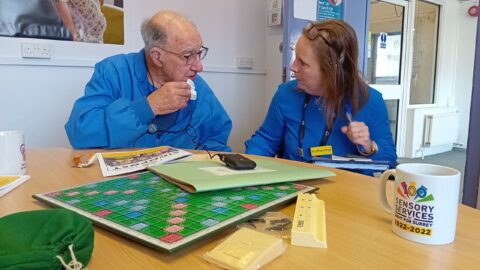Songs Of Praise For St Nicholas Church

For more than 930 years St Nicholas Church in Charlwood has been at the heart of the community. Having first opened its doors in the 1080s, the church has welcomed generations of worshipers, this month, RH History Uncovered looks at the history of the much-loved village church in Charlwood.
The oldest parts of the Grade 1 listed building, St Nicholas Church date back to around 1080, to place that into context, parts of the church were constructed just 14 years following the Battle of Hastings and Norman Conquest, and pre-date many English cathedrals.
St Nicholas Church’s smallest nave and the tower were built in around 1100 with a 15th Century medieval building forming most of the remainder. Today, the church still features some integral elements from the early Norman times including the building’s north wall and window.
The parish of Charlwood started life as an outlying parish in the Canterbury diocese, and the right to appoint the vicar belonged with the manor to the Prior and Convent of Christ Church, Canterbury Cathedral from at least 1231 to 1527, and a vicarage instead of a rectory was ordained by monks.
St Nicholas’ original plan featured of a simple three-cell structure consisting of a nave, a squat tower without a crossing and a rounded apse beyond before large works took place in 1280 which saw the addition of a new aisle on the south side, and an oak door which is still in use to this day.
The church’s pulpit dates from Tudor times, its construction is likely to have coincided with what was something of a boom time for Charlwood as the village enjoyed increased levels of prosperity with production of charcoal and extraction of iron taking place locally.
Inside the tower is the church’s muniment chest which is believed to have been made in the 1590s to house the parish registers which new laws at the time required churches to keep. As a result, baptism, marriage and death registers housed at St Nicholas Church date back to the year 1595.
The Victorian era brought about change, in the 1850s the internal layout of the church was altered, with changes taking place including the relocation of the altar and installation of choir stalls. At this time restoration work took place under the supervision of esteemed architect William Burges.
The church’s stain glass windows date from the mid to late 19th Century, at this time Charlwood was a peculiar of Canterbury. During the rearrangement of dioceses in 1878 it was transferred to Rochester before being added to Southwark.
In more recent times, the church has seen the building of toilet and kitchen facilities, making attendance for today’s parishioners of all ages more comfortable in a much-loved centuries old building made of famed Wealden sandstone, ironstone, flint, limestone and Horsham slates.
By Jacob White






